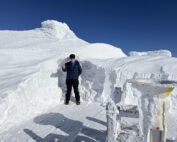Comparing Wind Speed at Different Locations
2015-11-14 20:38:32.000 – Michael Dorfman, Weather Observer/IT Specialist
The Mount Washington Observatory has a regional network of 19 different mountainous automated weather stations. This includes 6 sites every 1000 feet along the Mount Washington Auto Road from base to summit. We’ve recently installed anemometers at our 4000 and 5300 foot sites in hopes to better record wind speeds above tree line on Mount Washington. Our 4000 foot site is located near an old Signal Corps foundation block, and is rumored to occasionally have wind speeds rivaling the summit. Our 5300’ site is our highest site in our network of stations and is exposed to some impressive weather as well!
I wanted to do a very brief analysis of the data we’ve recorded so far from these anemometers (they’ve been installed since September). Don’t consider this to be a thorough analysis of this data-it’s more of a sneak-peak with more to come.
First, let’s take a look at the average wind speed from various directions. The following wind roses indicate the average wind speed from various directions. Winds are named for where they come from, so the wedge pointing to the northwest indicates the average wind traveling from the northwest.
Another explanation for these values is the size of the sample set. We’ve only had a few months of data from these sites, giving us a very good idea of prevailing wind directions (typically west and northwest on the summit), but not a very good sense of not-so-common directions. Our previous world record wind speed of 231 mph came from the Southeast, a direction we haven’t seen too much of in the last few months.
One thing stands out to me, and that is the northwest wind direction at 4000 feet. You can easily see wind speed from the northwest is over twice as strong as any other direction. Let’s look a bit more into this. So, while wind speed is from the northwest at 4000 feet, what direction is it on the summit? The answer to this question will tell us the effect terrain has on steering the wind.
This shows that wind speed from the northwest at the 4000 foot site typically yields wind direction from the west on the summit. When looking at the map above, you can see a ridge immediately to the west of the site. It’s possible that the wind is steered around this ridge, approaching the site from a more northwesterly direction. However, more research would be required to confidently say that this is the cause.
How do speeds on the summit compare to speeds at 4000 feet when coming from the northwest? Does the ratio of summit-to-4000-foot speeds change depending on wind speed? Let’s take a look:
Michael Dorfman, Weather Observer/IT Specialist
An Experience Worth 1,000 More
An Experience Worth 1,000 More By Mitchell Tsokatos Me and the summit sign once winter really got going. Taken 11/2/25. Unfortunately, my time on Mount Washington as an intern has come to
Supporter Spotlight: AJ Mastrangelo
Supporter Spotlight: AJ Mastrangelo By Wendy Almeida A young AJ on the summit with Rebecca Scholand. AJ Mastrangelo’s relationship with Mount Washington Observatory began long before his internship—or his current career as
Supporter Spotlight: Angelo Decrisantis
Supporter Spotlight: Angelo Decrisantis By Wendy Almeida For Angelo Decrisantis, Mount Washington has been a lifelong connection. It began in 1965, at age 15, on a family drive to the summit. “My first experience



